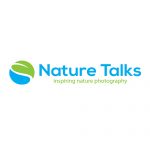Is it wise to become an under water photographer if you decide to spice up your life?
To get an answer to that question, I interviewed the Russian nature photographer Dmitry Kokh. At the NPOTY contest 2020 he was highly commended in the category ‘Under Water’. Dmitry is a passionate wildlife and underwater photographer based in Moscow. He took up photography only four years ago. In these ‘few’ years it has developed into a great passion, taking up a large part of his life. Time to find out what makes this passionate under water photographer to visit the farthest places and to explore the deepest seas to find things that inspire him.
Dmitry Kokh, now 41 years old, already felt the passion for nature as a young kid. Especially the under water world appealed to him ever since he was a child and he spent lots of time in the water with his goggles.

His parents stimulated this interest en send him to the Zoology school, where he was became a biologist student for a while. At the age of 11 he held a speech which draw the attention of Nikolay Drozdov. This Russian professor of Russian State University, also a public figure like Sir David Attenborough, complimented Dmitry Kokh with his speech and told him he would get very far in this field. Despite this huge stimulation Dmitry’s interest in nature disappeared after the age of 12 and he ‘started to live a boring live’ as he recollects it nowadays.

Into the deep, Dmitry Kokh
Inspiration
“Just over thirty I began rethinking my live. I decided to take another direction and to bring back passion and excitement. So I started my own IT company eight years ago which is since then my other big passion next to my family.
The passion for nature came back when a good friend invited me on a trip to the Azores to watch Sperm whales. As soon as I jumped in the water, swimming very slowly towards the whales and diving a bit to get a good composition, the animals disapeared into the deep. In all my excitement I took a shot of the diving whales which turned out to be a rather good one. It was even awarded afterwards. Back on the boat I realized again how great it was to literally ‘submerge’ yourself in the natural world. My passion emerged again and I began to gather information about animal behavior and how to behave as a spectator and photographer.
During these years of photographing and learning about it, I am hugely inspired by Paul Nicklen. Paul is a true hero for underwater photography. Also Brian Skerry, who made the Nat Geo movie “Secrets of the whales“. He is super talented and a great source of inspiration to me. I so much admire his dedication, just imagine the time he spent doing this throughout his whole life.“

Dolphins of Sataya reef, Dmitry Kokh
Preparation
“For me the water is my main destination. All expeditions I participate in are targeted on underwater animals. During my “boring years” I worked as a diving instructor and this turned out very useful with my renewed passion in place.
You have to keep in mind that diving takes you to a different world. Being in the water demands different physics, you have to control your movements and your temperature so it is important that you are in good shape. You have to be aware of the environment, study the currents, consider the clearness of the water due to the particles. Furthermore you have to know your camera very well because you are always shooting in manual mode, constantly changing the settings.
And last but not least it is quite expensive. Underwater photography demands a lot of gear. Traveling with it, with the restrictions and regulations when you travel by plane, is costly and complicated. Just imagine getting one hundred kilo of gear stuffed in a plane when you are up to visit Antartica.
When you overcome the challenges during preparation and finally start photographing under water, it is all about light and colours. That is why you need to be close to the subject. The (position of the) sun is important and also the use of flashes. Sometimes there is only ambient light, like during the shoots I did with the Leopard seal and the Belugas.”

Walrus Rookery, Dmitry Kokh
Photo trips become an experience
“When you go on a trip to visit places or shoot species that are on your bucket list, remember it is all about the proces. Don’t forget the chase is better than the catch. Preparation, traveling and finally shooting, feeling the connection with nature and the animal, it all adds up to the experience when you’re out there with the animal. In fact you don’t need the photos to remember it, it is all stored in your mind as little treasures. That said I still have some treasures waiting for me to get ticked. Like for instance an Anaconda under water.
My trips are 50/50 divided between planned and spontaneous. I like to go on spontaneous trips with friends. And when I go on vacation with the family we look for spots where there are beaches for the kids and some interesting places for me (and my gear!) so that is more or less planned. Some species are too shy for spontaneous trips like for instance the Baikal seal we photographed in Lake Baikal in Siberia, Russia. And sometimes destinations or circumstances are too difficult for spontaneous trips. Like for instance our planned expedition to photograph walruses in Antartica, we are already planning to get the gear there in the winter. Or our expedition this August to shoot polar bears under water using special devices since diving with Polar bears would be a little bit too dangerous :-).”

Leopard seal, Dmitry Kokh
Signature
“I think my signature is capturing the moment where there is a connection between the animal and the photographer. You can shoot a hundred photos but it is about catching that special moment where you can see emotion in the animal. Animals can be full of contrast and it is up to you to find the one in the proper state of mind, where the animal wants to communicate to you. Like for instance my encounter with a Leopard seal in 2019. Or a Beluga whale in June this year. Belugas are very shy and hard to find, but in Russia there is a pool where they gather with their calfs. In order to photograph them we were towed backwards behind a boat, our legs tied with a rope, while singing in the snorkels to attract the belugas…they are curious about where the sound comes from…
During this session my rope accidentally got untied, the boat went on and was gone for a while. At that moment a big Beluga came to see me and lingered around for about 20 minutes giving me plenty of opportunities to photograph. So it is obvious the best things happens when a plan goes sour. And the best shots are accidental but no accident!”

Beluga whale, Dmitry Kokh
Ambition
“Over the few years I practice photography, my ambition has changed. It started with shooting great photos of rare species to satisfy my ego. Nowadays the story behind the shot becomes more important. The more I practice photography and visit different places, the more obvious it becomes that the world is in danger. When animals loose their habitat, they disappear.
I want to inform the audience about the dangers threatening our natural world, and how to care about nature. That’s why I try to capture “decisive moments” in nature and show wildlife contextually in its environment. Furthermore I enjoy the process of trying to create memorable and beautiful pictures. Hopefully they will inspire people in some way to care about and conserve the natural world. We must realize we live in a time where we can tell stories while there still is wild nature….hopefully our grandchildren can do the same…”

The ice cutie, Dmitry Kokh
Photography contest
“Participating in photography contests like Nature Photographer of the Year plays an important role in ones career. It is about checking all the major competitors. And by checking I don’t mean having feelings of jealousy but having some inspiring moments instead, learning from the competition and getting a hint of where nature photography is going. Furthermore it is good for your ego, it offers me the chance to check my level in comparison to other photographers. So I entered this years edition of NPOTY 2021. And of course I am curious about the jury’s verdict.”

Polar bears, Dmitry Kokh
Social Media
“For me using platforms like IG or FB doesn’t come natural. I am an introverted guy and I don’t like to be in the spotlights. On the other hand I always say that you are not a photographer if you are not visible to the world. So sometimes I force myself to do it, to be visible, to be that photographer I want to be.
The benefits of using these social media platforms is that it creates an audience. And when you got an audience you can say something to them, bring them your message.
That is also why I like the opportunity to host masterclasses. Especially hosting masterclasses for kids is important to me. You can tell them what is going on in our natural world and what is important to preserve this natural world for the future generations and they are the first in line of these future generations. It is only fair to say my daughter is my most active student but all the kids are interested in nature. Kids are in general close to nature!”

Orca and the last moment of herring, Dmitry Kokh
Lifecycle of young herons
“During the Covid-19 misery we were able to rent a house with the family, away from the city which helped us to escape the Moscow lockdown. So I must admit it was not too bad, basically working from home and having fun with the family.
During one of my strolls outside I realized there was a heron colony nearby. That is when the idea of shooting herons with a drone came to me, which promised to be a nice project for me as a photographer. My first priority of course was not scaring the herons. So I started bringing the drone up at a considerable distance from the colony. After about a month I was able to shoot form a closer distance without the herons taking notice. This offered me the chance to capture the lifecycle of young herons from egg to fledgeling.“
At the end of the interview I asked Dmitry Kokh the following question: “if you could ask another nature photographer one question, who would that be and which question would you ask?
Dmitry answered: “It would be Paul Nicklen for sure. And I would ask Paul what should I do, what way would I go to shoot the frame of my life”.

Watchmen, Dmitry Kokh












